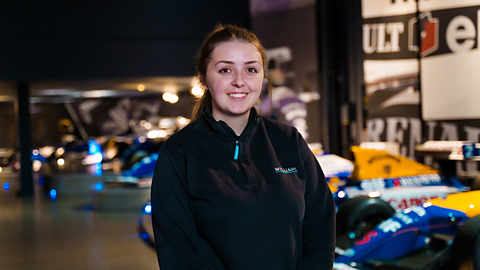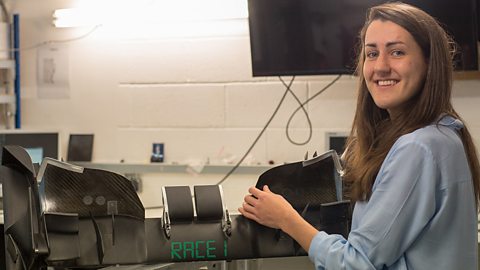Meet Chloe, 20, from Oxfordshire. She's a model shop apprentice for one of the biggest Formula 1 teams in the world. Part of our Bitesize apprenticeship series.

When you have a dream, you've got to grab it and never let go!
Why did you choose an apprenticeship instead of further education?
To get hands on experience rather than having to do assignments. I learn better by practically applying my academic knowledge, and an apprenticeship is a perfect balance of the two.
Is this the job you always wanted to do?
I have always wanted to work within Formula 1 as I also do car racing. Once I looked into the different departments at Williams Racing, I decided that I wanted to work in the model shop. This is because I can see how the car develops over time. Some of the car parts we make in the model shop are incredibly small, which wouldn’t be noticed when watching a race on TV and that really interested me.

What skills do you use in your work?
Team working skills are essential, as you have to be able to work with other members of staff from different departments to achieve the same end goal. Communication is another key skill which I think is important as I have to communicate daily with other teams, both clearly and correctly. I have advanced my practical skills which are constantly being developed through my apprenticeship. For example, I have shaped my skills building the 3D models that we then test in the wind tunnel to make sure they can withstand the speeds that our car can reach.
Why would you recommend your career to others?
Although the process is the same each day, there will always be something different to build and test, which makes each day really fun and exciting. There are a range of parts to build for the car and different jobs that you will be asked to do. This requires you to use and develop various skills that you wouldn’t normally use in your everyday life.
What are the benefits of doing an apprenticeship?
Learning whilst on the job plus being able to gain a qualification, which means that I can apply my academic knowledge practically.


Top Tips
- Take every opportunity that is presented to you.
- Be willing to learn because there is always something you won’t know.
- It is never too late to decide to try something new.

Chloe's apprenticeship involves working in the model shop for a motor racing team. Once she completes her apprenticeship, she can apply to become a model maker. Model makers create 3D models for many uses, from prototypes and film sets, to construction, engineering and architecture projects.
What to expect if you want to be a model maker
- Model maker average salary: £19,000 to £31,000 per year
- Model maker typical working hours: 43 to 45 hours per week
What qualifications do you need to be a model maker?
You could get into this role via a university course, a college course or an apprenticeship.
Sources: LMI for All, National Careers Service.
This information is a guide and is constantly changing. Please check the National Careers Service website for the latest information and all the qualifications needed.
For careers advice in all parts of the UK visit: National Careers Service (England), nidirect (Northern Ireland), My World of Work (Scotland) and Careers Wales (Wales).

How to become an engineer. collection
Find out more about the engineering sector and how those currently working in it got their foot in the door.

Amy: Formula 1 engineer
Amy helps develop ways to make racing cars go faster.

Jade: substation engineer apprentice
Jade is doing a Level 4 higher apprenticeship, training to become a substation engineer.
